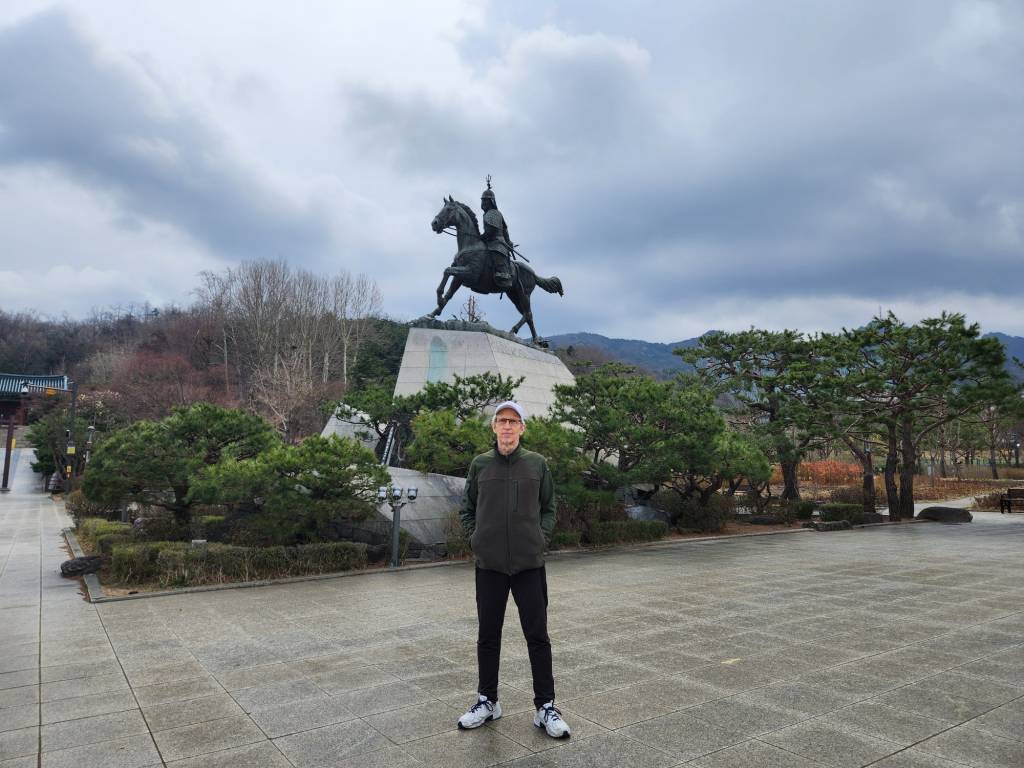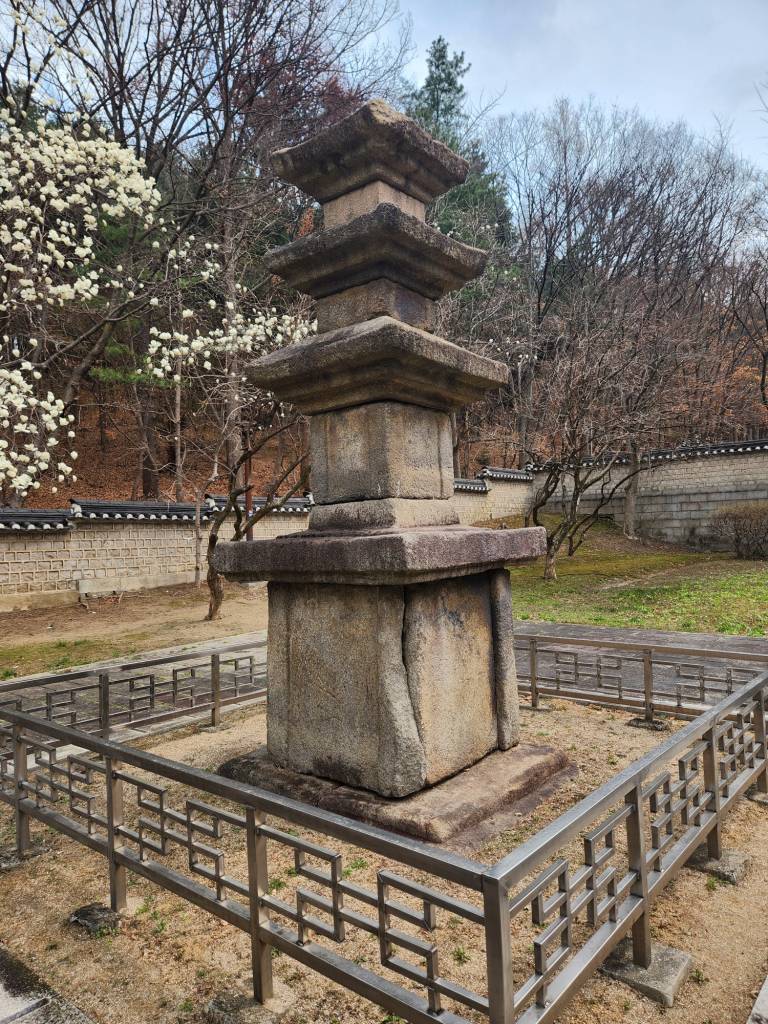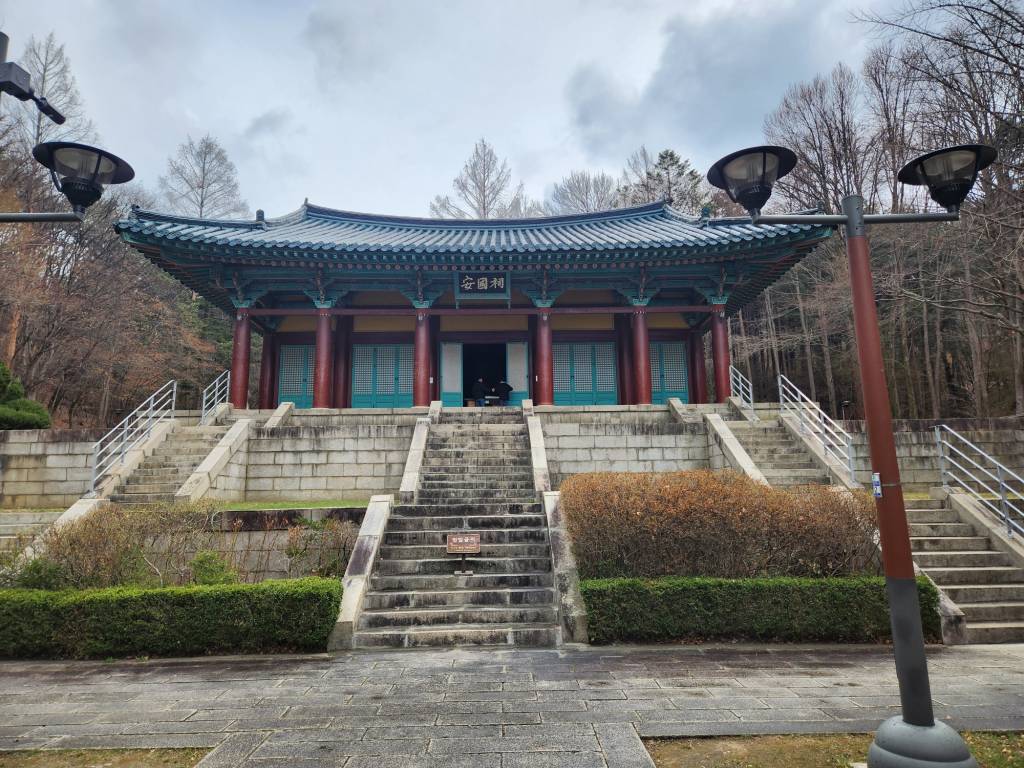In late March, I was with two You Me colleagues, Lee Jeong-jin and Park Ji-eun, at a nearby restaurant dining on samgyetang. For reasons I do not recall, the latter made reference to a long-ago Korean military man, Kang Kam-chan. I had not previously heard of him, but she seemed to think he was almost on a par with Yi Sun-sin, a statue of whom graces Gwanghwamun Plaza along with one of King Sejong. That’s some very high praise, so I knew I had to do some investigating.
Kang (948 –1031) was born and grew up close to what is today the site of Seoul National University. Although this was the golden age of Buddhism in Korea, he learned Confucian philosophy from his father along with martial arts and military tactics. By his mid-40s, Kang had joined the royal court at the capital of Gaesong. He undoubtedly knew that the Khitans—rulers of Liao, a much larger polity to the north—were a threat.
The first Goryeo–Khitan war took place in 993, but it wasn’t much of a war as no actual combat took place. The Liao force is said to have been 800,000 strong. Nonetheless, calm and adroit diplomacy by an official named Seo Hui convinced the Khitans to be happy with a tributary relationship.
The second, in 1010, was a bit bloodier; Liao forces sacked Gaesong and King Hyeonjong ignominiously escaped to Naju down in the southwestern corner of the peninsula. Kang Kam-chan provided security for the king during that whole process. With both sides of the Yalu River border fortified, skirmishes took place in 1015, 1016 and 1017.
The third, which came in 1018 and 1019, would be the real test. Since the Khitans had already taken Balhae (which Goryeo citizens regarded as their rightful land) in northeast China in 926, it was time to “do or die.” King Hyeonjong was determined to be rid of his reputation as a coward or at least a weakling. No longer willing to send tribute and recognize Khitan suzerainty, he put Kang in charge of the army although he had no formal military training. With about 200,000 soldiers at his disposal, Kang ordered the construction of a dam across a river east of Heunghwajin. When the Liao army (led by Xiao Paiya) attacked, he opened it up. The invaders suffered considerable losses, but fighting continued. Despite exhaustion and having their supply lines cut, they marched south to the vicinity of Gaesong before deciding that discretion was the better part of valor and retreating. Kang, assisted by Kang Min-cheom, had prevented the Liao soldiers from taking Gaesong and thus swiftly ending the war—and possibly the Goryeo dynasty and possibly the end of Korea’s existence as an independent country.
The final engagement of the Khitan–Goryeo wars took place at Gwiju (present-day Kusong, North Korea) on March 10, 1019. The Battle of Gwiju, which went on for several days, was eventually decided in favor of the “home team” and is considered one of Korea’s most significant victories. General Kang Kam-chan’s brilliant leadership ushered in a century of stability and prosperity for Goryeo. He had taught the Khitans a painful lesson, one that the Chinese, Mongols and Japanese had already learned or would soon: The Koreans would temporize (accepting tributary status, for example), but if necessary they would fight and fight well. I dare say that was proven again during the Korean War.
Not long after the cited meal with Jeong-jin and Ji-eun, I got on Line 2 and rode the subway to Nakseongdae Station. I had been there numerous times in the past to help some kids improve their English. This time, however, I wanted to visit Nakseongdae Park. Do you want to know what nakseongdae means? “The place where a star fell.” Legend has it that when Kang was born, a star had dropped from the sky.
The Korean government designated the park as a Tangible Cultural Heritage in 1972. The next year, the Anguksa shrine (a memorial ceremony is held there every October to commemorate the general), a stele and a statue of Kang on a charging horse were built and surrounded by a 409-meter-long wall; a 13th century four-level pagoda was brought from his nearby birthplace at Bongcheon-dong. I had a pleasant time there, going through the Kang Kam-chan Museum and observing a traditional Korean wedding. His victories in the battles of Heunghwajin and Gwiju are often ranked with Eulji Mundeok’s at the Battle of Salsu River (612) and Yi Sun-sin’s at the battles of Hansan Island (1592) and Myeongnyang (1597). All three overcame disadvantages, successfully defended the nation and are regarded as the greatest military commanders in Korean history.







4 Comments
One of the three great military commanders of Korea. Fascinating stuff Richard.
Thank you, Daniel.
Wow..Patriots of Korea..Good remembrance of having statue .Family and Generations will be proud of!
Lelen, thank you for reading it and your wise comment.
Add Comment